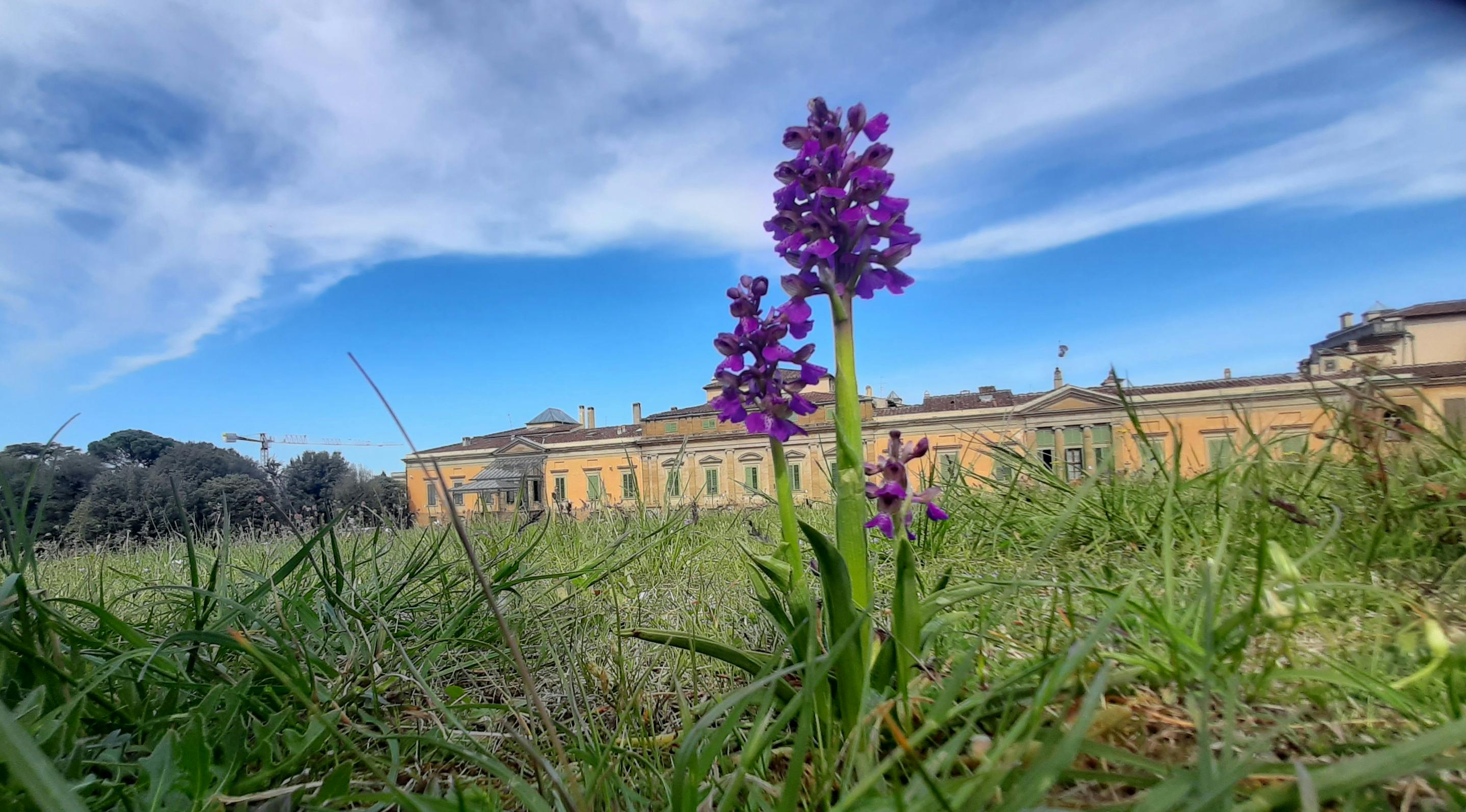Orchid - Genus Anacamptis
The name is derived from the Greek anakampein which stands for “bending backwards”, referring to the position of the pollini (structures containing the pollen). There are two species in the Boboli Gardens that belong to this genus: Anacamptis morio and Anacamptis pyramidalis.
Anacamptis morio
Some people say the name of the species derives from the Latin, morio, buffoon, because of the numerous speckles on the flowers; others say that it comes from the Spanish, morion, helmet, because of the hood-like shape that the sepals and side petals assume. The plant is usually small, 10 to 35 cm high. The rosy to violet-coloured flowers usually produce a dense inflorescence. To attract pollinating insects (bumblebees, solitary bees, domestic bees), it mimics the colour and shape of nectar-containing flowers and, like these, has a sack-shaped structure in the back of the labellum called a spur, to which the insect comes into contact with the pollen and removes it. Anacamptis morio specimen pools often consist of numerous specimens that can have varying colourations from one another. Albino forms (alba form) are not rare. A specimen of the alba form, found in Boboli in the first half of the ninteenth century, was donated to the Herbarium of Florence by the Florentine Academy of Georgofili in 1854. It was on this specimen that the morion alba form of Anacamptis morion was established in 2009.
Anacamptis pyramidalis
The species takes its name from the Latin pyramidalis because of the shape that the inflorescence assumes when it starts to flower. The plant is slender, 20 to 60 cm high, and has a slim, cylindrical, smooth stem. The flowers are small and pink or purplish pink, rarely light pink or white, and form a dense spike. They give off a slight perfume, especially towards the evening. A. pyramidalis is a nectariferous species (it contains a drop of nectar in the spur) and attracts daytime butterflies that act as pollinators.
Orchidee d’Italia: Guida alle Orchidee spontanee. GIROS, Gruppo italiano per la ricerca sulle orchidee spontanee, Cornaredo 2016, p. 153.
